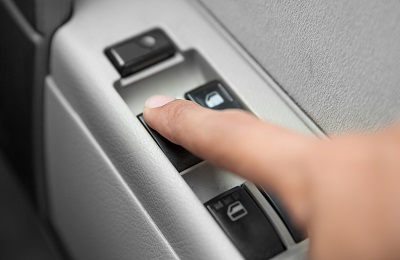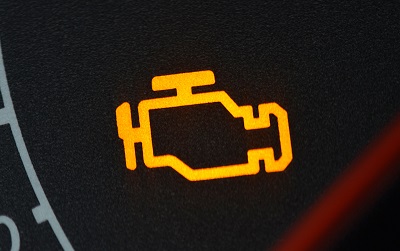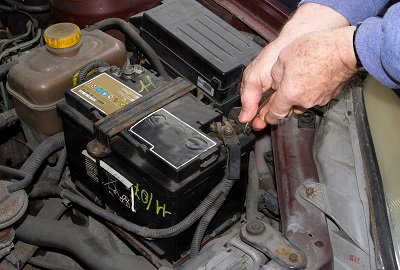![]()
How to Know if Alternator is Bad (Signs & Symptoms)
DISCLAIMER: AS AN AMAZON ASSOCIATE I EARN FROM QUALIFYING PURCHASES. THIS POST CONTAINS AFFILIATE LINKS THAT WILL REWARD ME MONETARILY OR OTHERWISE WHEN YOU USE THEM TO MAKE QUALIFYING PURCHASES. FOR MORE INFORMATION, PLEASE READ MY EARNINGS DISCLAIMER.
|
The number one symptom of a bad alternator is when lights start dimming or flickering and electronics start to act weird. This is especially true at lower RPM. Once you press that gas pedal everything starts going back to normal, but when you go back to idling, the lights dim again.
When the headlights start dimming in our car or the battery is not charging, we start wondering had our alternator has gone bad. If this is your case, take out the battery charger and try charging the battery first. If it holds a charge (meaning, that the battery is OK), then take your alternator to AutoZone and let them test it for free.
It can be very confusing, and it is hard to figure out whether your battery or alternator is a problem. Usually, if you can start your car, then the problem is NOT your battery. You can also load-test your alternator, meaning: “Turn all those gadgets ON!” and if after running for a minute or less it slowly starts dying, take it to the local shop for a test.
It is normal for the alternator not to produce any voltage upon starting your car and it usually doesn’t get to its full potential, until you get to about 2000 RPM. This means before doing any alternator testing on your car, you will need to rev up your engine.
One way to check if your alternator is in the good shape (or not) is by disconnecting the negative terminal to your battery while your car is running. If it keeps on running, then your alternator is fine. Even though this test works, do not do it many times over because it can mess up your computer.
Here is a video on how to do that:
** Very Important! Performing this test on newer cars is NOT recommended due to the possibility of a high voltage spike burning your computer down (when reconnecting the battery). Multimeter tests are safer and more accurate.
The second (and most accurate) way to check for alternator problems is to use a multimeter. Before you start using this method, it is a good idea to make sure that your battery is fully charged. You can test (including load test) and charge your battery at almost any parts store.
You can also check the battery voltage yourself with a multimeter tool. Set your multimeter tool to 20v DC and connect a red lead to the positive terminal of the battery and a black one to the negative. The voltage at the battery should be between:
12.0 – 13.0 volts (with engine OFF)
If your alternator is working correctly, then the voltage after you start the car should be in between:
13.2 – 14.2 volts (when car is running)
Testing at the battery side when your engine is ON can give you a clue if you have a bad battery problem. Run your engine for a while and if after you turn it OFF, if your battery reading drops immediately below 12v, then you should be looking into replacing your battery.
Now, let’s test the alternator. Your electronics inside your car and lights could be failing due to improper power supplied by the alternator. While the car runs, the alternator output should be between:
13.8 – 14.2 volts (with headlights off)
While testing at the alternator side, make sure you have good access to the alternator and your clothing cannot be tangled. This is how you test the alternator without taking it out:
- Touch the red terminal of the alternator with the red probe.
- Touch the metal frame of the car (not the alternator) with the black probe.
If your alternator delivers low voltage (below 14.2), then you will have a problem with dimming lights (that become brighter at higher RPM) and engine stalling. If your alternator supplies you with a voltage above 14.5v-15.0v, it is clearly damaged, or the voltage regulator is going bad.
Here is a nice video on how to check for alternator problems:
So, what are the bad alternator symptoms?
#1. Starting and dying
This symptom could also apply to the battery problem. If your car fails to start after your engine stalls, check the battery for proper voltage first.
#2. Dimming lights

If your lights are dimming, but become brighter as you press the gas pedal, that is a sure sign that your alternator is letting you down. You can look at it from another angle. If your lights are nice and bright but become dim as you press the brake pedal, this is another sign of a failing alternator.
In this situation, you may also notice some electronics, like the radio, going off as well. If you press the gas pedal again and start accelerating, your lights should become bright once again and all electronic gadgets should work as usual.
Dimming lights are a quite common sign of a failing alternator.
#3. Electrical Malfunctions

If there is not enough voltage coming in, it will be noticed within your electronic equipment! That includes power windows, power locks, power seats, radio, and even an instrument panel.
Your interior lights could flicker or go dim due to an inconsistent voltage supply. Headlights are affected as well. Car gauges could start acting up and flicker as well.
#4. Weird sounds
When your alternator starts making noise when it’s running, you could potentially be running into a problem. Here are some common bad alternator sounds and their causes:
- Grinding. Loose or worn-out bearing. Gets louder as you press the gas pedal.
- Whining, squealing, squeaking. Worn out or loose alternator belt. Noise increases as you accelerate.
- Growling. A misaligned belt is rubbing against the pulley.
- Knocking. A broken belt or the bolt that holds the alternator in place is loose. Broken bearing.
#5. Illumination of the Battery light
When the battery light comes ON, it means that the battery is not being charged by the alternator. If this happens only when the lights are ON and electrical accessories are being used, then your alternator cannot keep up with the electrical load and should be checked for faults.
This light does not necessarily mean that there is a problem with your battery! It is a problem with a charging system in general, that includes – alternator.
#6. Illumination of the Check Engine light

When the “Check Engine” light comes on, it does not mean that you have an alternator problem, but the fault code inside your computer should be checked out (especially if it’s accompanied by power failure, stalling, noises, etc). The most common code for the alternator problems is:
P0562
This code comes up on OBD II Diagnostic Scan Tool when PCM (Powertrain Control Module) detects under-voltage of your vehicle (usually below 10v for 60 secs at idle). Ask a professional to check it out and replace the necessary parts (or the alternator itself).
You should not drive for too long with this light ON!
#7. The battery is dead

Your battery could die for different reasons and one of them is being really old. Another reason for the bad battery is that the alternator allows it to be fully discharged. If all you do is keep on recharging it and throwing it back in your car, you are not solving a possibly bigger problem.
If your battery was deeply discharged due to ineffective charging by your alternator, it could be dead by now and require a replacement. After 3-4 deep discharges, a battery starts losing its holding capacity and cannot serve you any longer.
You can test your battery with a voltmeter after recharge to make sure that it is within a proper range. If it’s not, replace the battery. Jump-starting your car will also give you a clue as to whether your alternator is working or not (runs – battery problem, stalls – alternator problem).
#8. Burning Smell

A bad smell that is coming out from under the hood does not always mean that you have an alternator problem. Regardless of the cause, if you notice that something under the hood is burning, you need to take your car to the mechanic ASAP!
A burning smell is also associated with the alternator problem. If the belt is overtightened or there is an electrical short involved, you may experience a rubber or plastic burning smell. The faulty bearing can overheat the alternator as well.
#9. Other possible alternator symptoms
These are more general symptoms that could give you a clue about the alternator problem:
- The car does not shift properly.
- Car is not as fuel-efficient as it used to be.
Before running out and getting a new battery and/or alternator it is always a good idea to check wiring for problems and for any corroded or loose connections.
Hope this helps and you will fix your problem shortly! A map below (with professional mechanic services) should be able to assist you, if needed:
Attention! This article is for informational purposes ONLY and is NOT a replacement for professional advice! ALWAYS consult your local specialist for an appropriate solution to your problem. All statements, prices, contact information, recommendations, and reviews contained herein came from sources that we believe to be reliable, but the accuracy or completeness thereof is not guaranteed. Please contact the service provider for complete details and updates.



